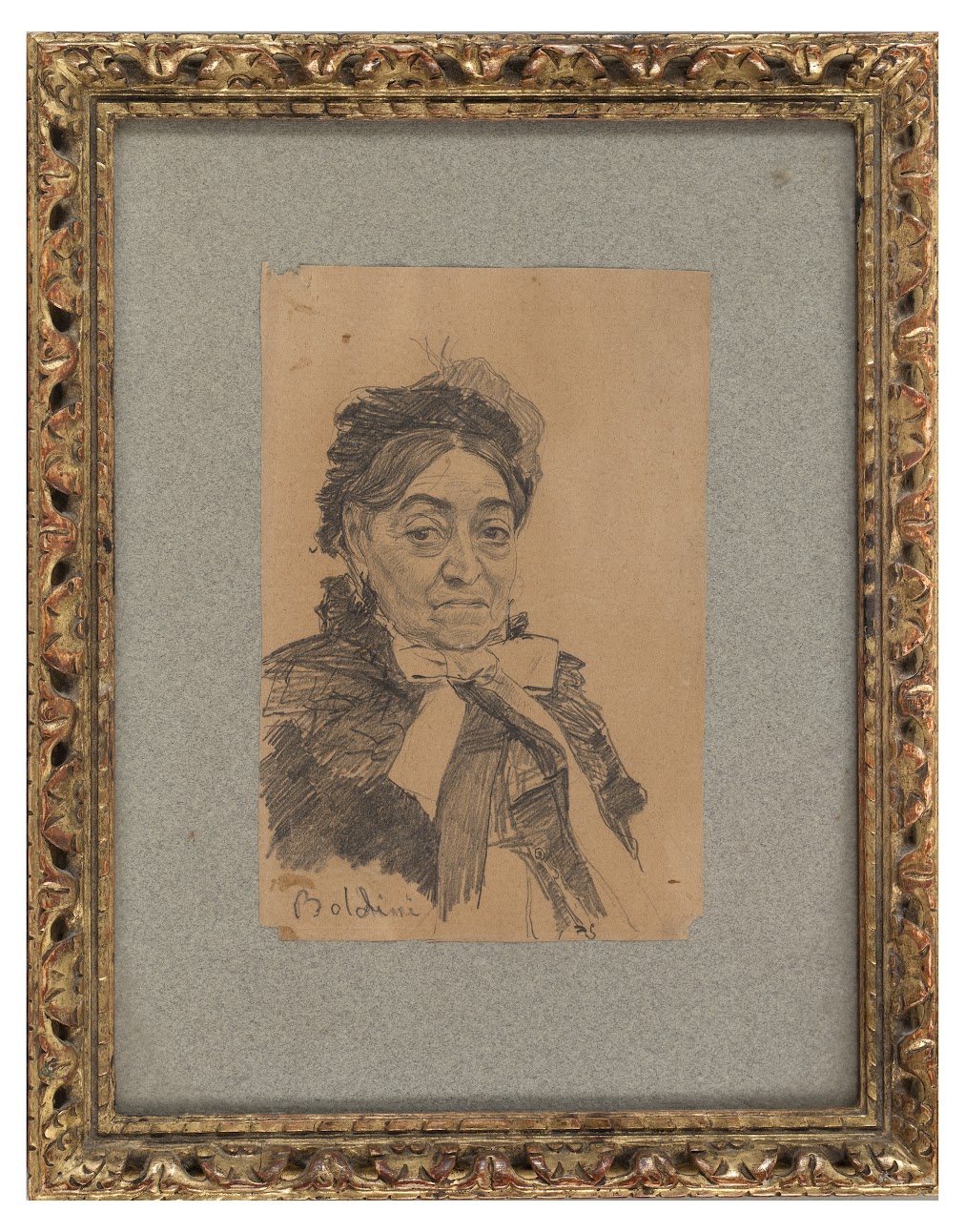Giovanni Boldini, born on December 31, 1842, in Ferrara, grew up in an artistic household, being the son of an artist and a mother who was both pious and wealthy. This stimulating environment fostered the development of his creative talent. From a young age, he demonstrated an aptitude for drawing, quickly leaving school to train under his father. At the age of 22, he moved to Florence, where he formed friendships with influential painters such as Michele Gordigiani and Cristiano Banti.
In 1871, Boldini made the choice to move to Paris. Initially attracted by the vogue for genre scenes, he quickly distinguished himself as a prominent portraitist. His work “Conversation at the Café” (1879) illustrates his talent for capturing the essence of Parisian life, while his portraits of women, particularly those of the Marchioness Luisa Casati and Countess Gabrielle de Rasty, testify to his skill in highlighting the beauty and elegance of his subjects.
Boldini stands out for his ability to capture the energy and movement of a vibrant era. His dynamic compositions and bold framing, influenced by artists like Edgar Degas and photographers such as Eadweard Muybridge, anticipate a cinematic perspective. His portraits, often commissioned, reflect his keen business sense and meticulous attention to detail, which he uses to flatter his models while revealing their essence.
He developed a distinctive style, frequently described as “impressionistic” for his way of capturing light and movement. His bold use of color and fluid forms earned him the nickname “Paganini of the brush.”He sought to immortalize the fleeting moment, creating works that transcend time.
His career reached its peak at the end of the 19th century when Boldini became the portraitist of choice for European aristocracy and influential figures. His portrait of Giuseppe Verdi, for example, showcases his talent for immortalizing iconic personalities.
Giovanni Boldini passed away on January 11, 1931. He is recognized as one of the most remarkable portraitists of the Belle Époque, and his works continue to be celebrated in museums around the world.

Sign up to the newsletter and stay informed about our latest acquisitions and exhibitions:
© Galerie Rousset 2023